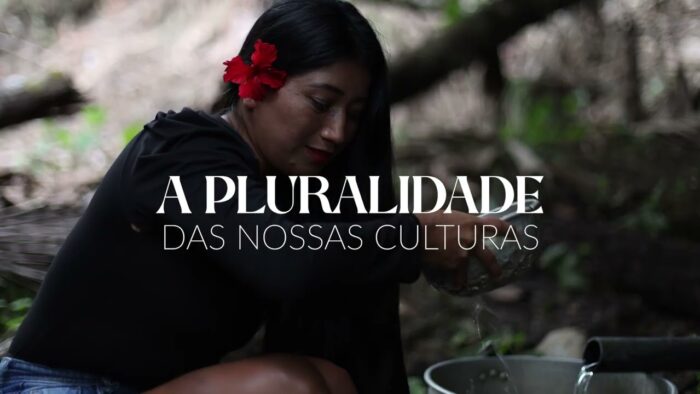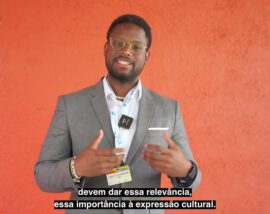Tratemos de hacer el ejercicio: ¿Cómo imaginamos al indígena de América Latina? ¿Cómo es? ¿En qué paisaje lo ubicamos? ¿Haciendo qué? Lo más probable es que el boceto que hacemos en nuestra mente nos lleve a una escena en canoa o en una cabaña, en un paraje sin concreto, ni semáforos. Difícilmente, por lo menos no en un primer momento, lo imaginamos cruzando la calle en alguna ciudad. El dato que contrasta con esta visión es que el 49% de la población indígena de América Latina ha migrado al entorno urbano en las últimas décadas. Sin embargo, como apunta en esta entrevista Germán Freire, experto en Desarrollo Social del Banco Mundial, “la sola idea del indígena urbano reta nuestra representación colectiva de lo que es ser indígena”. A propósito de la conmemoración, este 9 de agosto, del Día Internacional de los Pueblos Indígenas y la celebración del décimo aniversario de la Declaración de las Naciones Unidas sobre los Derechos de los Pueblos indígenas, aprobada el 13 de septiembre de 2007, nos acercamos a este tema que significa un reto para la región. Pregunta. ¿Por qué los indígenas de América Latina han migrado desde sus territorios tradicionales a las ciudades? Respuesta. Las razones son muy variadas. En muchos casos migran por los mismos motivos que lo hacen todos los latinoamericanos. En las ciudades hay mayores oportunidades de empleo, de acceso a educación, salud y servicios básicos. En Perú, por ejemplo, un hogar indígena tiene un 37% más probabilidades de ser pobre si reside en zonas rurales. Pero las razones de más peso suelen ser el acceso a educación y salud. Si bien la escuela primaria experimentó una expansión transcendental la década pasada, persisten brechas significativas, especialmente a nivel de educación secundaria y terciaria. Asimismo, los servicios de salud en zonas rurales siguen teniendo deficiencias importantes. A veces estos servicios están presentes solo nominalmente o se prestan en condiciones que ponen barreras al acceso. Por otro lado, los territorios indígenas han estado en constante presión por la expansión de las fronteras agrícolas y de las industrias extractivas. Una quinta parte del Amazonas tiene potencial minero, por ejemplo, y el 20% de estas áreas de potencial explotación coinciden con territorios indígenas. Los conflictos internos también han afectado de manera desproporcionada a las comunidades indígenas rurales, en países como Guatemala, Colombia o Perú. Todos estos factores suman, y explican en parte por qué hoy alrededor del 50% de la población indígena de la región reside en zonas urbanas. En algunos países la proporción es mucho más grande. En Argentina, por ejemplo, la población indígena urbana ya supera el 80%. P. ¿Cuáles son los desafíos que deben afrontar los indígenas de América Latina que deciden migrar a las ciudades? R. La situación de los indígenas en las ciudades es paradójica, porque, si bien están generalmente mejor que en sus territorios de origen, también es cierto que se insertan en el entramado urbano en condiciones muy desventajosas. Sus conocimientos y tecnologías tradicionales suelen tener poco valor en el mercado laboral urbano, así que tienden a emplearse en trabajos mal pagados y del sector informal, con todo lo que eso implica en términos de seguridad laboral y económica. También, una vez en las ciudades, los indígenas suelen ser relegados a zonas inseguras, insalubres, con menores oportunidades laborales, peores servicios y expuestas a desastres naturales. La proporción de hogares indígenas viviendo en barrios marginales duplica la proporción de hogares no indígenas. Todo esto supone un gran reto para los gobiernos y agencias de cooperación, porque las políticas de inclusión y prestación de servicios diferenciados para la población indígena se diseñaron teniendo en mente comunidades rurales. La sola idea del indígena urbano, de hecho, reta nuestra representación colectiva de lo que es “ser indígena”. Sin embargo, el número de hogares indígenas viviendo en entornos urbanos va a seguir creciendo, a juzgar por la tendencia de las últimas décadas. Es decir, las ciudades ofrecen innumerables oportunidades para los indígenas, pero la contracara de estas migraciones es que los exponen a nuevas formas de exclusión y discriminación. La región tiene que hacer mayores esfuerzos para pensar en estrategias que permitan cerrar las brechas laborales, educativas o de acceso a vivienda, por ejemplo, sin que esto represente para ellos una renuncia a su identidad o su cultura. Un estudio del Banco Mundial, señala que el sentido de dignidad es fundamental para que las políticas de inclusión social tengan éxito. P. ¿Qué rol juega la mujer indígena en el escenario urbano? R. Fundamental. En muchos casos las mujeres son pioneras en los procesos de migración rural-urbano. La migración a las ciudades a veces es una oportunidad para liberarse de roles tradicionales y aumentar su independencia, si bien ellas enfrentan mayores retos que los hombres. Muy a menudo las mujeres indígenas no solo ganan menos que las mujeres no indígenas, sino que también ganan menos que los hombres indígenas. Se ha calculado que una indígena boliviana ganaba en promedio 60 por ciento menos que una no indígena por el mismo tipo de trabajo. No cabe duda de que son víctimas de doble discriminación, por su condición de indígena y de mujer. Pero, a pesar de estas brechas, el rol de las mujeres indígenas en entornos urbanos es central. Son portadoras de conocimientos, son las que saben de medicina tradicional, por ejemplo. También son el ancla de los niños con su propia cultura y sus lenguas. Son empresarias, combinando aspectos de sus economías tradicionales, como la solidaridad y el trueque, con aspectos de mercado. Pero tan importante como todo esto es su creciente participación en el espacio público, en la toma de decisiones a nivel local, nacional y regional. Un ejemplo notable es el de las Wayúu de la Guajira colombo-venezolana, que han ocupado cargos de gobierno, académicos y de todo tipo a ambos lados de la frontera. La mujer es el eje alrededor del cual giran todas las decisiones de la familia Wayúu, y esto evidentemente lo han llevado con ellas a ciudades como Riohacha o Maracaibo. P. ¿Cuáles podrían ser los aportes indígenas al desarrollo urbano? R. Muchos. Los indígenas traen consigo visiones diferentes de organización social, de ordenamiento del espacio, de relacionamiento con el ambiente, estrategias de contención, conocimientos médicos tradicionales, formas de participación política, propuestas arquitectónicas, lenguas, etc. Esta diversidad suma mucho a la resiliencia del entorno urbano. El Alto, en Bolivia, es un ejemplo conocido del potencial de la ciudad para expresar formas indígenas de organización y participación dentro del Estado. A través de las Juntas Vecinales, los Aymara no solo han liderado en la construcción y administración de su entorno urbano, sino que se han convertido en actores centrales de la política nacional. Otro ejemplo, menos conocido, está en las áreas metropolitanas de Buenos Aires y La Plata. Poca gente sabe que ahí se concentra la mayor parte de la población indígena argentina; aproximadamente una cuarta parte del total nacional. En La Plata, en concreto, hay una comunidad Nam Qom, en el barrio Islas Malvinas, que es un ejemplo tremendo de dignidad y lucha por mejorar su inclusión al entorno urbano. Con muy poco o ningún apoyo externo, esta comunidad ha construido sus propias viviendas, organizan el espacio comunal de acuerdo a sus visiones de solidaridad y convivencia, toman responsabilidad colectiva por la alimentación y el cuidado de sus niños, tienen iniciativas escolares y extra-escolares para preservar su lengua y su cultura, entre otras cosas. Ejemplos como este hay en toda Latinoamérica, pero han recibido poca atención hasta ahora, por lo que permanecen invisibilizados. Ese, precisamente, es el gran reto para su inclusión. No tenemos demasiado conocimiento de las necesidades u oportunidades de la población indígena en entornos urbanos, pues hasta hace muy poco este tema no estaba en la agenda de desarrollo de la región. El reporte Latinoamérica Indígena en el Siglo XXI,que lanzamos el año pasado sugiere precisamente que tenemos que empezar a pensar en la población indígena en términos de su heterogeneidad. Los modelos de desarrollo y los instrumentos analíticos que usamos hoy para abordar sus necesidades y sus reclamos son poco sensibles a la realidad de que la mitad de los indígenas de la región vive en entornos urbanos, así como al hecho de que existen múltiples dimensiones de exclusión que se superponen, pues no es lo mismo ser hombre indígena que ser mujer indígena, niño, anciano, etc. Lo que sí creo es que con la inclusión de los indígenas al desarrollo urbano ganamos todos. En algunas ciudades constituyen una proporción considerable, que tiene muchísimo que aportar a la economía local, a la toma de decisiones, a la búsqueda de soluciones a problemas críticos de nuestras ciudades, como el uso sustentable de los recursos o la participación ciudadana. La mayor riqueza de la región siempre ha estado en su diversidad, por lo que tiene sentido que esa heterogeneidad de visiones y propuestas se incorporen al desarrollo urbano de la región.


